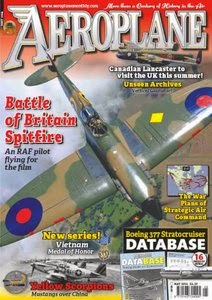Thursday, March 20, 2014
Tamiya Model Magazine International 04/2014
In 1935, during the Paris Motor Show, an extraordinary prototype and superb masterpiece of style, the 'Bugatti Aerolithe', designed by Jean Bugatti, (a man of genius, son of the famous brand's founder) was presented. Besides having a splendid and futuristic line, the car had technical peculiarities which at that time were regarded as being 'science fiction'. The bodywork, for example, was built in Electron (a magnesium alloy) which couldn't be welded by the technology of that time; as a matter of fact, different parts were assembled with thousands of rivets. The name 'Aerolithe' (meteorite), was given to the car because it was so futuristic looking that it seemed like an object arriving from outer space. My total and absolute admiration for Bugatti's creations and his futuristic vision of automotive engineering was the basis of my next modelling project after the 'Steampunk monobike' (TMMI 210 April 2013). The 'Bugatti/Tesla' is a new chapter of my own personal research and interpretation of mechanical subjects, built through the different epochs, technological hybrids handed down through history and reworked with the use of an 'ucronic filter' and by giving a retro-futuristic aesthetic, not totally fantasy, not totally sci-fi, but something even better, an alternative reality where past, present and future are joined and mixed to create conceivable vehicles, normal and the same time impossible...
Classic Military Vehicle 04/2014
In order to provide sleeping accommodation in the field for very senior officers - Brigadiers and Generals - the British Army had used converted trailers which were deployed with the appropriate formation headquarters including HQ I (BR) Corps. However, in the mid-seventies a motor caravan based on the Land Rover 109 was developed. Searle Ltd of Sunbury on Thames was both a Land Rover dealer and a specialist conversion company offering a range of conversions of basic Land Rovers including a motor caravan based on the Land Rover 109 and known as the Carawagon De Luxe. It had an elevating roof for extra headroom, a roof rack over the cab, and interior space for up to four beds as well as a refrigerator, cooker and toilet. The elevating roof was novel in that as it collapsed the curved ends folded in and the vertical side pieces folded out, taking the natural curve out of the aluminium sheet which formed the roof and allowing it to lie flat. By 1977 a prototype had been built on a military spec Land Rover 109 (62GF86) using the existing Carawagon bodywork including the roof rack. The elevating roof provided standing headroom of a little over 6ft (1.9m) over the full length of the living area. The roof rack over the cab provided space for stowage of camouflage nets and a 9x7ft (2.75x2.13m) tent that could be fitted over the rear door. The internal arrangement was rather different to the civilian version. Along the right-hand side was a fitted cabinet providing a working area for up to three people which had cupboards and drawers below. Above was a vertical map board together with a drop-down table.
Military Illustrated Modeller 04/2014
The Panzer II D was designed as a fast panzer to equip the light divisions. The concept was for the panzer to be rushed to the battle on the back of a lorry and then offloaded to join the attack. Combat in Poland quickly revealed the flaw in this cunning plan, as many bridges couldn't accommodate the weight of both lorry and tank, so much time was wasted offloading the panzer before crossing the bridge. Added to this was the high centre of gravity that resulted in some lorries spilling their loads. The concept was subsequently abandoned. Only forty-three Panzer II Ds were issued before the decision was made to complete all future chassis as Flammpanzers. During 1940, the surviving PzII Ds used in Poland were withdrawn from units, again for conversion to flame-thrower tanks. The Polish PzII Ds were all from the first production series, referred to as D1. The second production batch of D chassis vehicles (D2) were converted to Marder II as modelled in the last armour issue of this magazine. The D2 chassis can be spotted as the sprocket and rear idlers had a reduced quantity of strengthening ribs. Of interest, the PzII Ausf.E version was similar to the Ausf.D, but was fitted with a lubricated track and sprocket with rollers - reminiscent of contemporary German halftracks. Again only a small quantity was produced.
Aeroplane 05/2014
Nearly 40 years after it first flew, Hawker Siddeley Harrier GR.3 XZ132 emerged from the workshops of Jet Art Aviation at Selby, Yorkshire, in early February. Jet Art, a company which specialises in restoring ex-R AF aircraft, acquired XZ132 in November 2013, the machine having spent the previous 22 years as an instructional airframe in a heated building at RAF Cranwell. The aircraft made its first flight in April 1976, and after de livery to the RAF went on to serve with Nos 1,3 and lV Sqns. During the spring of 1982, XZ132 was one of the aircraft prepared for Operation Corporate to retake the Falklands Islands. This included the fitting of an I band transponder fairing beneath the nose cone fairing and modifications to enable XZ132 to carry Sidewinder missiles. On May 3,1982, XZ132 was flown from its base at Wittering, Cambs, to St Mawgan, Cornwall, from where it departed for an epic flight to Ascension Island, via Banjul in Gambia. Between May 6 and 14, XZ132 flew combat air patrol missions around Ascension Island but then suffered a major fuel leak, which resulted in the aircraft being stripped down and air freighted back to the UK for repairs. A year later XZ132 finally made it to the Falklands, being one of six Harrier GR.3As operated from RAF Stanley by 1453 (Tactical Ground Attack) Flight, flying air defence patrols for the Falklands Garrison.
Airforces Monthly 04/2014
AS AFM goes to press a satisfactory resolution to the recent events in Ukraine -and more particularly in the Autonomous Republic of Crimea (ARC), which comprises most of the Crimean Peninsula's land mass -seems along way off. Russia ceded the peninsular to Ukraine more than half a century ago when nobody in the Kremlin could foresee the end of the Soviet Union. Following the political upheaval in greater Ukraine after protestors in the capital Kiev seemed to have achieved their ambition of deposing President Viktor Yanukovych, the focus of attention rapidly shifted to Crimea. On February 28, 13 Russian Air Force Ilyushin 11-76 Candid transport aircraft flew around 2,000 Russian troops to the Black Sea Fleet's 7057th Air Base at Gvardeyskoye (Hvardiiske Air Base to the Ukrainians), north-west of Simferopol. Russia has a long-standing agreement to base Sukhoi Su-24 Fencerbombers there. A day earlier Ukraine reported that eleven Russian helicopters (eight M-24 Hind attack ships and three Mi-8 Hips) had illegally crossed the border into Crimean airspace; they were seen and photographed flying over Sevastopol in the direction of the Russian naval base at Kacha, also part of the Black Sea Fleet's 7057th Air Base and home to a mixture of Russian naval helicopters and fixed-wing aircraft.
Aviation News 04/2014
The latest round of US defence cuts, if they go ahead, will result in the retirement of all the USAF A-10s and U-2s, together with all of the US Army's OH-58D Kiowa Warrior helicopters. The proposals, which had been anticipated for some time, were announced by US Secretary of Defense Chuck Hagel at a Pentagon media briefing on February 24 to preview the Fiscal Year 2015 budget. The plans were confirmed when the full budget proposals were unveiled on March 4, on which date they were sent to Congress, which must give its approval before they can be implemented. Hagel said the new budget places emphasis on capability over capacity in order to protect key modernisation programmes. This means that funding is protected for the new long-range bomber, F-35 Lightning II Joint Strike Fighter (JSF) and the KC-46A tanker. Hagel said, however, that in order to fund these investments, some serious cuts have to be made elsewhere. As a result, the USAF will reduce its number of tactical air squadrons, which will include retiring the entire A-10 fleet, confirming previously announced proposals. Hagel said: "the advent of precision munitions means that many more types of aircraft can now provide effective close air support, from B-1 bombers to remotely piloted aircraft." Hagel also confirmed that the USAF will retire the veteran U-2 reconnaissance aircraft in favour of the unmanned Global Hawk system.
Subscribe to:
Comments (Atom)





